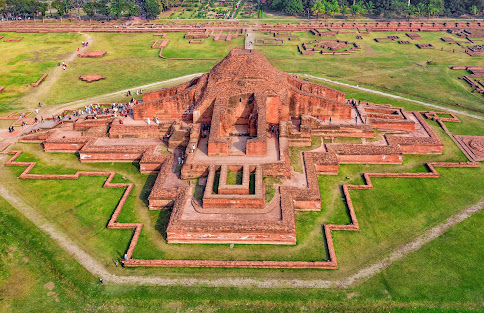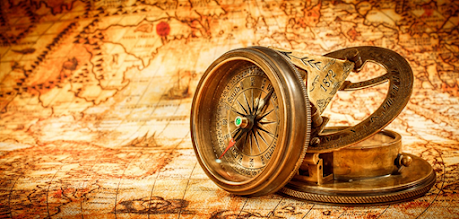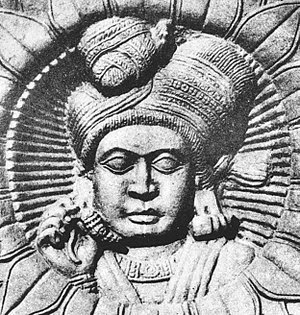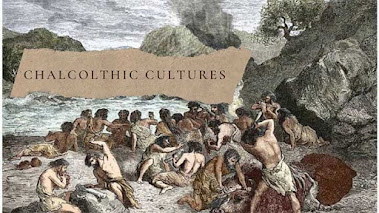Pala Empire
The Pala Dynasty
The Pala Empire was a major dynasty in North India , especially in the North East India, Bengal during 750 - 1161 CE the post-classical period of Indian Sub Continent. It was founded by a Gopala , by winning the tussle of power between the local chieftain. They were followers of the Mahayana and Tantric schools of Buddhism. The empire was founded with the election of Gopala as the emperor of Gauda in 750 CE. The Pala stronghold was located in western Bengal and eastern Bihar, which included the major cities of Gauda, Vikrampura, Pataliputra, Monghy, Somapura, Ramvati (Varendra), Tamralipta and Jaggadala. The Pala dynasty created the environment for Buddhist monasteries to thrive and discuss philosophies without prejudice. But, importantly, it also facilitated the spread of these ideas around the world, leaving a legacy that we can still see today.
Sompura Mahavira
Dharampala was the successor of Gopala. he greatly expanded the boundaries of the empire, and made the Palas a dominant power in the northern and eastern India.He revived the Nalanda university and founded the Vikramshila university.He was a great patron of Buddism.He built the great Vihara at Somapuri in Verendri and the Vihara in Paharpur.
Devapala:
In 810 CE , Dharampala was succeeded by his son Devpala .He ruled for 40 years. Famous poet Vajradatta who was author of Lokesvarashataka, was one of the gems of his court. He was staunch Buddhist and constructed many temples and monasteries in Magadha.He ruled over Pala till 850 CE.
Emperor Ramapala (1144 – 1162 AD) was the last strong Pala ruler, who gained control of Kamarupa and Kalinga. The empire was considerably weakened by the 11th century, with many areas engulfed in rebellion.
The Pala kings are also considered to have been shrewd diplomats, forging relationships with different cultures to promote new trade routes. The empire enjoyed good connections with Southeast Asia and the Middle East – but it was more than just trade that was shared. Cultural ideas were also transferred and there's evidence of Islam appearing in Bengal during this time, while mathematical and astronomical achievements of the Indian civilisation were absorbed in places like Iraq. In Southeast Asia, the most prominent of this exchange of ideas can be seen in the architecture of temples that were based on the design at Paharpur.
Administration:
Pala inherited the administrative from the Guptas. Copper plates of Pala's indicate the efficient administrative system.
The Pala rule was monarchial. The king was the centre of all power.
• Pala kings would adopt imperial titles like Parameshwara, Paramvattaraka, Maharajadhiraja.
• Pala kings appointed Prime Ministers.
• Pala Empire was divided into separate Bhuktis (Provinces). Bhuktis were divided into Vishayas (Divisions) and Mandalas (Districts). Smaller units were Khandala, Bhaga, Avritti, Chaturaka, and Pattaka. Administration covered widespread area from the grass root level to the imperial court.
Architecture :
- Various mahaviharas,Stupas ,chaityas,temples and forts were constructed. Most of the architecture was religious with the first two hundred years dominated by Buddhist art and the last two hundred years by Hindu art.
- Among the various mahaviharas ,Nalanda,vikramashila,somapura,Traikutaka,Devikota ,Pandita ,Jagaddala vihara are notable. Planned residential buildings for monks were made.
- A large number of manuscripts on palm-leaf relating to the Buddhist themes were written and illustrated with the images of Buddhist deities at these centres which also had workshops for the casting of bronze images.
- Somapura mahavihara at Paharpur ,a creation of Dharmapala is one of the largest Buddhist vihara in Indian sub continent ,its architectural plan had influenced the architecture of countries like Myanmar and Indonesia.
Arts:
1) Paintaing:
The earliest examples of miniature painting in India exist in the form of illustrations to the religious texts on Buddhism executed under the Palas of the eastern India .There are two forms of painting manuscripts and wall painting. Manuscripts were written on palm leaves.In these paintings scenes of life of Buddha and several god and goddess of Mahayana sects are depicted. The impact of tantricism on these paintings are easily visible. Red, blue,black and white colours are used a primary colours.Pala painting is characterized by sinuous line, delicate and nervous lines ,sensuous elegance, linear and decorative accent and subdued tones of colour. It is naturalistic style which resembles the ideal forms of contemporary bronze and stone sculpture and reflects some feeling of classical art of Ajanta with sensuous bias of art of Eastern India. Wall painting has been found in Saradh and Sarai sthal in Nalanda district. At the bottom of the platform made of granite stone flowers of geometric shapes, images of animals and humans are found.
Bodhisattva Maitreya, Leaf from a dispersed Ashtasahasrika
Prajnaparamita (Perfection of Wisdom) Manuscript
2) Sculptures:
The Gupta tradition of sculptural art attained a new height under the patronage of Pala ruler. The sculptures of stones and bronze were constructed in large numbers mostly in monastic sites of Nalanda,Bodh Gaya etc. Most of the sculptures drew their inspiration from Buddhism. Apart from Buddha sculptures of gods and goddess of Hindu Dharma like surya, Vishnu, Ganesh etc were constructed. Generally only frontal parts of the body have been shown in the sculptures. The front as highly detailed and decorated. Bronze casting was an important feature of pala sculptures. The main features of pala sculptures is their free flowing movement. Almost all figures are of similar sizes and were carved out of grayish or white spotted sandstone.
Literature :
The Gauda riti style of composition was developed during the Pala rule. Many Buddhist Tantric works were authored and translated during the Pala rule. The notable Pala texts on philosophy include Agama Shastra by Gaudapada, Nyaya Kundali by Sridhar Bhatta and Karmanushthan Paddhati by Bhatta Bhavadeva. Sandhyakar Nandi's semi-fictional epic Ramacharitam (12th century) is an important source of Pala history. A form of the proto-Bengali language can be seen in the Charyapadas composed during the Pala rule.
Decline:
Shortly after Devapala, the Pala Empire gradually started disintegrating. Although Mahendrapala and Shurapala I seems to have retained the Pala controlled territories, Vigrahapala abdicated the throne after a brief rule, and became an ascetic.The Pala art came to a sudden end after the destruction of the Buddhist monasteries at the hands of Muslim invaders in the first half of the 13th century.Ramapala was the last strong Pala ruler. After his death, a rebellion broke out in Kamarupa during his son Kumarapala's reign. The rebellion was crushed by Vaidyadeva, but after Kumarapala's death, Vaidyadeva practically created a separate kingdom. The Pala dynasty was replaced by the Sena dynasty.
- By :- Shreyas Nikam ( Team Historic Wednesday)
References:
https://www.insightsonindia.com/medieval-indian-history/major-dynasties-of-early-medieval-period/the-palas/
https://www.acubeias.com/article/pala-dynasty
https://testbook.com/ias-preparation/ncert-notes-pala-empire/
https://visitworldheritage.com/en/buddha/the-importance-of-the-pala-dynasty/2ab1ddeb-2bc1-462c-9e65-1bda56f69d43
Image References:
https://www.lookandlearn.com/history-images/YM0074907/Bodhisattva-Maitreya-Leaf-from-a-dispersed-Ashtasahasrika-Prajnaparamita-Perfection-of-Wisdom-Manuscript
https://commons.wikimedia.org/wiki/File:Crowned_Buddha_-_Basalt_-_ca_10th_Century_CE_-_Pala_Period_-_Bihar_-_ACCN_6574_-_Indian_Museum_-_Kolkata_2016-03-06_1555.JPG
NOTE :-
This blog is meant for Educational Purpose only .We do not own any Copyrights related to images and information , all the rights goes to their respective owners . The sole purpose of this blog is to Educate, Inspire, Empower and to create awareness in the viewers. The usage is non-commercial(Not For Profit) and we do not make any money from it.
FOLLOW US ON:-
INSTAGRAM :
https://bit.ly/coep_blogs_insta
LINKEDIN:
https://bit.ly/coep_blogs_linkedIn
YOUTUBE:-






Comments
Post a Comment